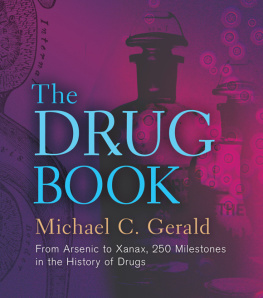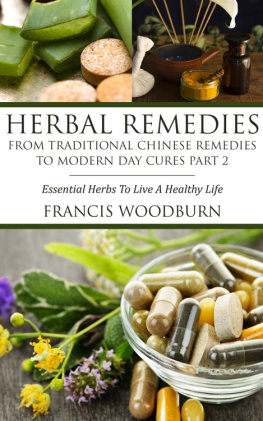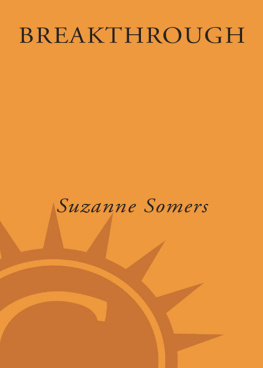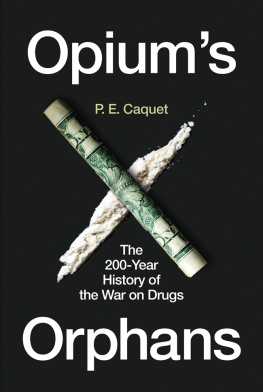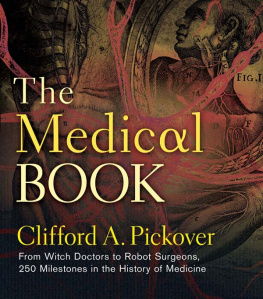Books by Michael C. Gerald
The Complete Idiots Guide to Prescription Drugs
The Nurses Guide to Drug Therapy
Nursing Pharmacology and Therapeutics
Pharmacology: An Introduction to Drugs
The Poisonous Pen of Agatha Christie
THE
DRUG
BOOK
FROM ARSENIC TO XANAX
250 MILESTONES IN THE HISTORY OF DRUGS
Michael C. Gerald


STERLING and the distinctive Sterling logo are registered trademarks of Sterling Publishing Co., Inc.
2013 by Michael C. Gerald
All rights reserved. No part of this publication may be reproduced, stored in a retrieval system, or transmitted, in any form or by any means, electronic, mechanical, photocopying, recording, or otherwise, without prior written permission from the publisher.
ISBN 978-1-4027-9232-8
Library of Congress Cataloging-in-Publication Data
Gerald, Michael C.
The drug book : from arsenic to Xanax, 250 milestones in the history of drugs / Michael C. Gerald.
p. ; cm.
From arsenic to Xanax, 250 milestones in the history of drugs
ISBN 978-1-4027-8264-0
I. Title. II. Title: From arsenic to Xanax, 250 milestones in the history of drugs.
[DNLM: 1. Pharmaceutical Preparationshistory. 2. Drug Therapyhistory. 3. Pharmacologyhistory. QV 11.1]
615.109dc23
2012050737
For information about custom editions, special sales, and premium and corporate purchases, please contact Sterling Special Sales at 800-805-5489 or specialsales@sterlingpublishing.com.
2 4 6 8 10 9 7 5 3 1
www.sterlingpublishing.com
The Drug Book traces the significant milestones in the history of drugs. It is not intended to serve as a substitute for diagnosis, advice, or treatment, including the use of drugs, by a qualified healthcare practitioner. Always consult your healthcare provider for proper medical attention and the most current drug product information provided by the manufacturer. Neither the publisher nor the author assumes any liability for injury arising from material in this publication.

This book is dedicated to my granddaughters Aila Tovia Jones and Io Esther Gerald, who will be the beneficiaries of future advances in drug development.
Linking Past and Present
Because the newer methods of treatment are good, it does not follow that the old ones were bad; for if our honorable and worshipful ancestors had not recovered from their ailments, you and I would not be here today.
Confucius (551478 BCE)
The search for drugs that free humankind from suffering is a pursuit that crosses time and time zones. Humans have long relied upon natural substances to attain relief from ailments afflicting the mind and body. While most of these herbs satisfied an immediate need to fill an empty stomach, a select few altered physical or mental states. Depending upon the substance ingested and its quantity, the effects ranged from lifesaving to disastrous. Early local healers separated those herbs that were harmful or ineffective from those that provided benefits, and the latter emerged as the medicines of that era. A few survived the test of time, enhancing well-being even today.
Are herbal drugs only of historical interest? Not by a long shot. According to the World Health Organization, in some Asian and African countries about 80 percent of their population rely on traditional medicines to deal with their primary healthcare needs, with herbs the most popular component of these practices. And the use of herbal medicines is not restricted to developing countries. Herbal medicines are major ingredients in dietary supplements, which for many of us serve to complement, or even replace, modern medicines.
As you might guess, new drugs are now arising from dissimilar sources and by a different kind of researcher. No longer is the discovery of new medicines left to happenstance or accident, as was the case when our ancient ancestors fortuitously found an herb that corrected their digestive system problems or that soothed their irritated skin. Until the nineteenth century, most Western drugs were concoctions of herbs. During the early 1800s, major advances in extraction procedures led to the isolation of pure chemical constituents from herbs. These constituents include: morphine, responsible for the pain-relieving effects of opium; quinine, which accounts for the antimalarial properties of cinchona; and colchicine, underlying the anti-gout effects of meadow saffron. As we will see in this book, many contemporary drugs are chemicals or chemical modifications of herbs that bear considerable, little, or no resemblance to those in nature. In the late nineteenth century and well into the twentieth, scientists turned to animals for hormones used as medicines, and later to microbes as a valuable source of vaccines and antibiotics.
Drug discovery over the past century has capitalized on an increasing knowledge of the molecular biology and physiology of the healthy and disease-ridden body. This has led to the rational design and an outpouring of new chemical drugs that have successfully treated diseases that had previously evaded the best efforts of science. Now, during the most recent decade, and to an ever-increasing extent, there has been an explosion in the number of biologic drugs that specifically target disease mechanisms at the molecular level where they originate. These highly complex protein molecules are naturally produced in the body in minute quantities and, thanks to advances in molecular biology, can now be mass-produced. (Although readily available, biologic drugs are not necessarily readily affordable.)
As drugs have evolved, so have the laboratories in which they have been discovered. Medications are now rarely developed by lone scientists working in isolation in cold and damp basement laboratories, as did Marie and Pierre Curie when isolating radium from pitchblende. Their research was conducted at meager financial cost but at considerable cost to their health, and they did not even patent their discovery. Today, new discoveries are the creations of multidisciplinary teams of scientists and physicians bringing to bear their individual and collective expertise in state-of-the-art research facilities in universities or multinational companies, at costs of many hundreds of millions of dollars, with the anticipation of billion-dollar returns on the investment. Times have certainly changed!
What Do We Consider a Drug?
She had never forgotten that, if you drink too much from a bottle marked poison, it is almost certain to disagree with you, sooner or later.
Lewis Carroll (18321898)
You might surmise that I am using terms drug and medicine synonymously. Not so. I will consider drug to also encompass poisons, drugs of abuse, recreational substances, and those chemicals that are intended to improve the quality of our lives.
As you peruse The Drug Book, you will find scores of medicines that have prevented, managed, and even cured diseases that were once untreatable, incurable, and invariably fatal. We will look at the following: anti-HIV medicines that have reduced the AIDS death rate by 80 percent and, in three decades, have transformed this dreaded disease into a chronic disorder; oral contraceptives that have liberated women both sexually and economically, permitting them to decide if and when to have children; general anesthetics that have extended the range of the surgeons scalpel from performing rapid, crude amputations to highly complex operations on vital organs; and drugs that have contributed to the significant reduction in the risk of heart attacks and strokes, the leading causes of death in the Western world.

